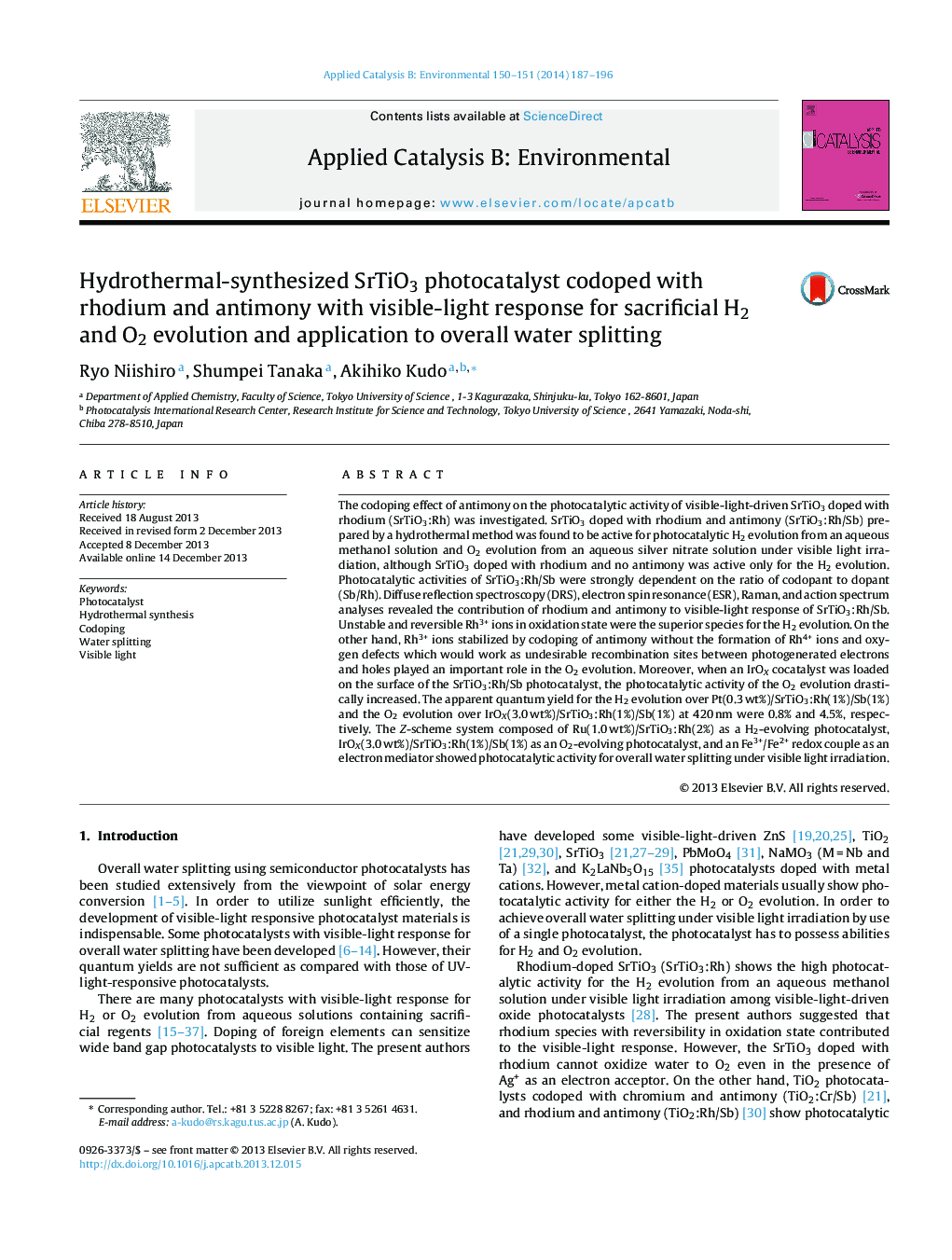| کد مقاله | کد نشریه | سال انتشار | مقاله انگلیسی | نسخه تمام متن |
|---|---|---|---|---|
| 45923 | 46427 | 2014 | 10 صفحه PDF | دانلود رایگان |

• SrTiO3:Rh/Sb was active for sacrificial H2 or O2 evolution under VIS irradiation.
• Unstable and reversible Rh3+ ions played an important role in the H2 evolution.
• Rh3+ ions stabilized by codoping of antimony was important for the O2 evolution.
• Loading of IrOX improved the photocatalytic activity of SrTiO3:Rh/Sb for the O2 evolution.
• Z-scheme system was constructed using SrTiO3:Rh/Sb with a redox couple.
The codoping effect of antimony on the photocatalytic activity of visible-light-driven SrTiO3 doped with rhodium (SrTiO3:Rh) was investigated. SrTiO3 doped with rhodium and antimony (SrTiO3:Rh/Sb) prepared by a hydrothermal method was found to be active for photocatalytic H2 evolution from an aqueous methanol solution and O2 evolution from an aqueous silver nitrate solution under visible light irradiation, although SrTiO3 doped with rhodium and no antimony was active only for the H2 evolution. Photocatalytic activities of SrTiO3:Rh/Sb were strongly dependent on the ratio of codopant to dopant (Sb/Rh). Diffuse reflection spectroscopy (DRS), electron spin resonance (ESR), Raman, and action spectrum analyses revealed the contribution of rhodium and antimony to visible-light response of SrTiO3:Rh/Sb. Unstable and reversible Rh3+ ions in oxidation state were the superior species for the H2 evolution. On the other hand, Rh3+ ions stabilized by codoping of antimony without the formation of Rh4+ ions and oxygen defects which would work as undesirable recombination sites between photogenerated electrons and holes played an important role in the O2 evolution. Moreover, when an IrOX cocatalyst was loaded on the surface of the SrTiO3:Rh/Sb photocatalyst, the photocatalytic activity of the O2 evolution drastically increased. The apparent quantum yield for the H2 evolution over Pt(0.3 wt%)/SrTiO3:Rh(1%)/Sb(1%) and the O2 evolution over IrOX(3.0 wt%)/SrTiO3:Rh(1%)/Sb(1%) at 420 nm were 0.8% and 4.5%, respectively. The Z-scheme system composed of Ru(1.0 wt%)/SrTiO3:Rh(2%) as a H2-evolving photocatalyst, IrOX(3.0 wt%)/SrTiO3:Rh(1%)/Sb(1%) as an O2-evolving photocatalyst, and an Fe3+/Fe2+ redox couple as an electron mediator showed photocatalytic activity for overall water splitting under visible light irradiation.
Figure optionsDownload as PowerPoint slide
Journal: Applied Catalysis B: Environmental - Volumes 150–151, 5 May 2014, Pages 187–196